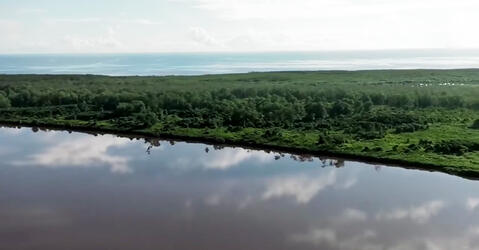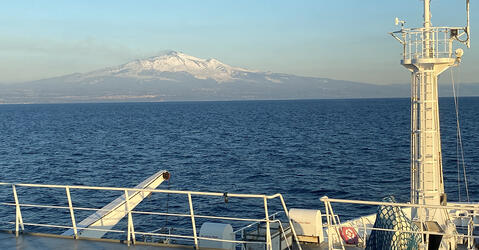You are here
Notre-Dame.
One of France's most iconic landmarks, which has become, for the past year, a worksite or monumental proportions...
On April 15th, 2019, its roof and spire burned down. Charred beams are all that is left of its majestic medieval wooden roof.
In addition to the massive restoration effort underway, an ambitious scientific project has also begun.
More than 50 teams of scientists are collaborating in a vast collective effort to study the gothic cathedral and the damage it has endured - to its woodwork, stone framework and stained glass among others.
Today an engineer from the project’s digital team has come to Notre-Dame. He will be working with rope access technicians - who can maneuver in particularly difficult sectors of the work site.
He has brought a laser scanner which will enable him to produce a 3D rendering of the area just above the cathedral’s vaults.
The device must be placed at the center of the space to be digitized, before being moved to a new location for more measurements.
This operation must be carried out a dozen times at different points, in order to cover the entire area.
The machine scans its surroundings with its laser beam.
By precisely measuring the time taken by the light to return to the device, it is possible to calculate the position in space of each point of the location that reflected the ray.
The scanner can generate hundreds of thousands of dots per second, with a resolution of just a few millimeters.
Scientists must work against the clock to create an entire digital backup of Notre-Dame before the clues related to the fire are all removed.
In addition to the laser scanner data, the 3D team uses another device as well, developed specifically for this unusual project. It is a setup of cameras rigged onto a cable which can take hundreds of photos and record the debris left from the roof.
These photos are then used to create another 3D model of the rubble.
These virtual constructions are mere building blocs of a vast digital cathedral that is poised to play a key role in Notre-Dame’s restoration.
All the cathedral data produced by scientists in the past, present and future will be compiled on a digital platform archiving the different stages of the monument's life.
This collaborative tool, which grows with each discovery made by the scientific teams, will allow both researchers and restorers to access, on a single platform, all of the available information related to wood, frame, stone, metal, and structure of the cathedral.
The platform aims to be not only a reference, but also a real working tool allowing users to carry out measurements, annotations, and to navigate this colossal database that continues to develop from day to day.
A way for our current digital tools to assist all those working tirelessly to study this cathedral that has survived more than 8 centuries and help it rise from its ashes…
Building a Digital Monument
How can Notre-Dame's stone, woodworks and stained glass be restored in the best possible manner? A large scientific collaboration bringing together more than 50 research teams has begun to study the iconic cathedral damaged by fire a year ago. A digital data team has also joined forces to create a digital backup of the edifice and develop tools that will collect all available information about it.
CNRS / Université de Bordeaux / Université de Bordeaux Montaigne
Quentin Salvi
Benoit Congy
Jarnias





